Working with Drinkaware to help people cut down drinking (part 2 of 2)
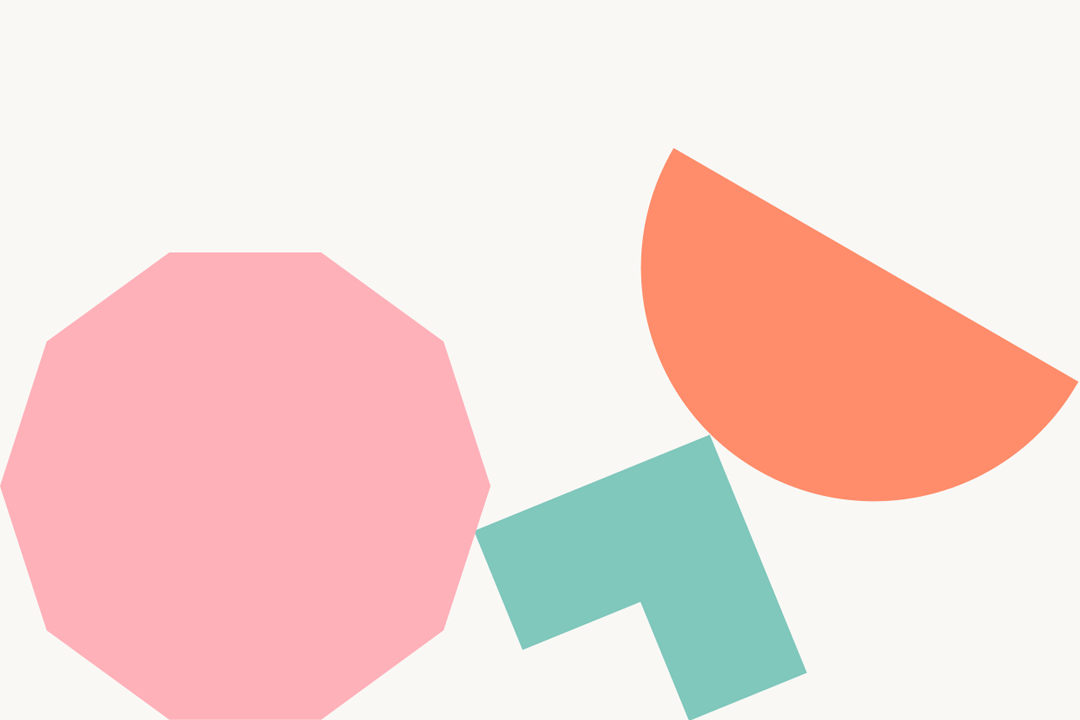
In design we can leverage people’s individual journey, preferences and attitude towards change
Last week we blogged about how we developed a more detailed understanding of the needs and behaviours of people who drink. In this post, we explain our approach to designing services that will support long term change.
A new way to think about user groups: a personal journey towards long-term change
We know that designing for a vast group of users is hard. It’s even harder when it revolves around something as complex as alcohol and drinking behaviours.
Demographics and official scoring mechanisms are useful when creating user groups but in design, we can leverage people’s individual journey, preferences and attitude towards change.
When thinking about changing, people largely fit in to 3 ‘states of mind’ about their drinking:
- not considering changes
- thinking about changing
- trying to change
People will typically move between these stages throughout their lives, depending on personal and external triggers. For example, they may have tried changing but failed several times and given up (so moved from not considering a change to trying and all the way back).
We created an in-depth journey map to show how people move between the 3 stages, and where Drinkaware has the biggest design opportunities. But we recognised that we needed something more simple to represent these non-linear, complicated journeys people were on.
Inspired by the famous design squiggle we came up with our representation of how a person starts and attempts to change their drinking behaviour.
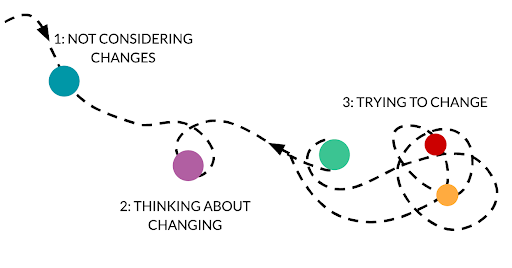
The Drinkaware team were going in the same direction, recently working towards an awareness-intent-action marketing funnel. The difference with our journey was that it demonstrated the messy reality of people’s relationship as opposed to a neat funnel. We also filled in detail around needs and challenges based on real conversations we had with real people. And we strictly used the language real people used which is one of the most important principles when designing services, content and digital products with real users’ needs in mind.
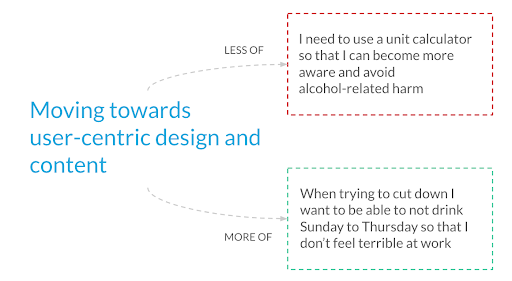
Understanding the three states of mind
1. Not considering changing
People in this group are not doing anything about their drinking because they are not aware that they’re drinking too much or know it but don’t think it’s a problem. Sometimes people think they drink the same amount as everyone else. They might also feel that they function well, despite heavy drinking. This might be because they’re younger and don’t feel the physical aftermath of heavy drinking, or they’re older but are generally healthy and feeling fit.
From a design perspective, people in this group don’t have a clear user need. They’re not actively trying to achieve anything in the context of their drinking.
So Drinkaware can keep focusing on building awareness and helping these users take that next step.
2. Thinking about changing
Generally, during this state people are becoming more aware of their own drinking and questioning their habits. They’re trying to ‘confirm’ that their drinking is really a problem, and in trying to decide what to do, what ‘drinking less’ looks like for them.
This means they’re also noticing other people’s lack of drinking and becoming more informed about their drinking usually by looking up information online. Knowing that they’re drinking too much and being open to change is often not enough to do anything about it. Some people get stuck with good intentions only.
Drinkaware can help people at this stage confirm that they need to change and how to do it in a personalised way.
3. Trying to change
Making positive changes that are sustainable in the long-run is not a linear process. It’s a cycle of disappointments and small victories. Typically people will have to try a few different things to figure out what works for them. Sadly, some people struggle to keep going when they’ve experienced setbacks. And might even revert to their old drinking behaviour, or worse, after several unsuccessful attempts to cut down.
Some people don’t want to quit drinking altogether, they want to be able to enjoy drinking but they struggle to stay in control and stop once they’ve started drinking. For example, they feel like they need to finish the open bottle of wine at home or they just get carried away when out with friends.
When I go out I want to be able to have a few drinks and not come home and want a nightcap. I want to get into the habit of having one or two glasses and then just stop
Drinkaware can support people to choose the right things to try and recover from setbacks. And they can experiment with different interventions to overcome specific challenges like staying in control.
The area of design opportunity
We complemented the new journey and user needs approach with a product review, several rounds of ‘show and tells’ with the Drinkaware team, ideation workshops, and group prioritisation activities. Together we realised that the biggest area for opportunities at the moment is helping people to get past just ‘thinking about changing’ to doing something about it and keep trying regardless of setbacks.
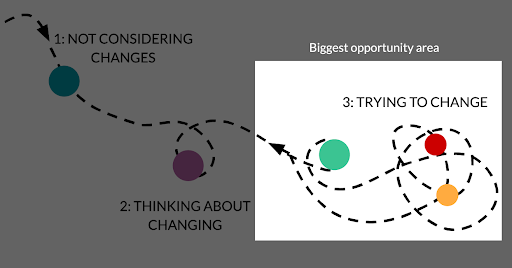
So what’s next?
We gave Drinkware a set of recommendations to help them maintain momentum. Some of these were bigger, long-term principles like mixing academic and quantitative research with more light-touch methods and adopting a user-centric content strategy.
But we also agreed on specific things they can do to benefit their users right away, like fixing certain usability issues and running a couple of sprints to turn design opportunities into something tangible.
We suggested running 2 design sprints to experiment with online and offline ideas. And we’ll be working with Drinkaware to help them do this ‘in-house’.
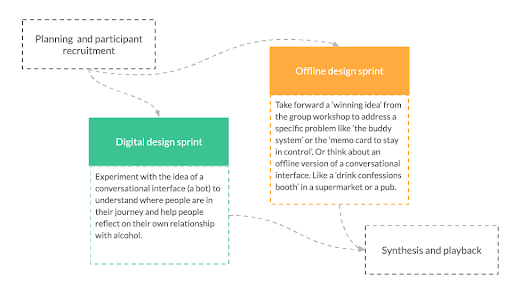
If you’re interested to find out more about the way we do research, head over to our playbook.
If you want to find out more about this project, talk to Vita (vita@dxw.com). Or to hear more about our work in general, follow us on Twitter and sign up to our newsletter.